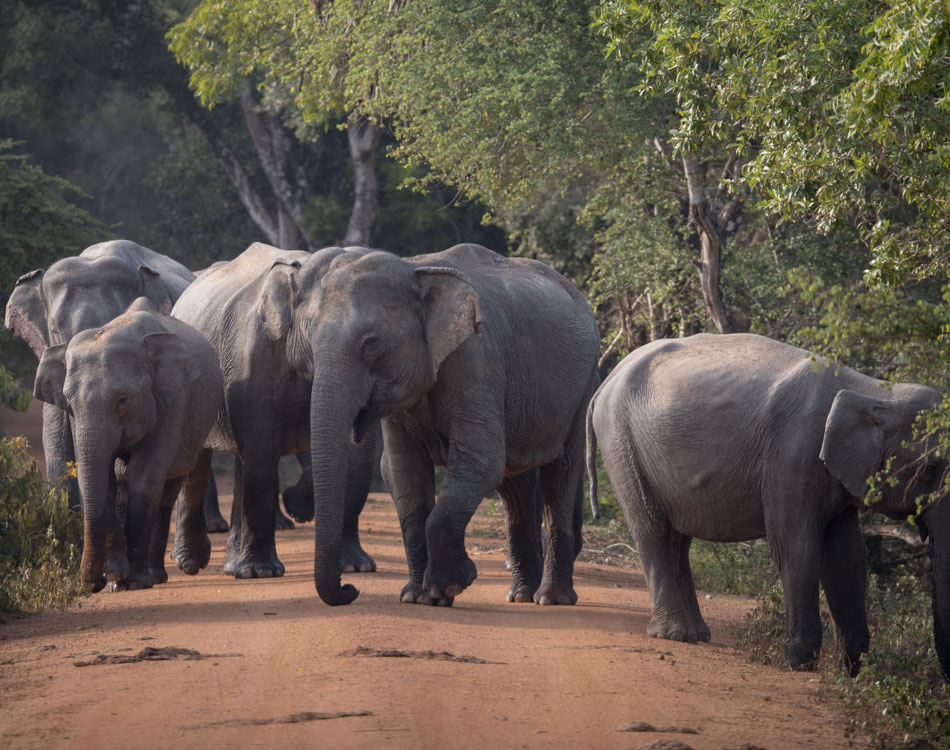FULL DAY WILPATTU
Wilpattu National Park is the largest and oldest of its kind in Sri Lanka. Located in the dry zone of the north western coast of the country, Wilpattu is world renowned for its leopard and sloth bear population. The highlight of the park – which gives the park its name – is the existence of several “natural lakes” – also known as ‘villus’ (sand rimmed depressions that fill up with rainwater).
Throughout the park, a total of about 60 natural lakes are found. Most animals and birds use these ‘villus’ as their breeding grounds, hence wherever you spot the lakes, there is a high chance of animals being spotted around there. Although Wilpattu is the largest national park in Sri Lanka, it is not the most visited one. Hence the animal sighting probabilities are slightly less but on the flip side, the park has a more genuine sense of wilderness due to the fewer visitors. Dedicated safari goers will definitely enjoy the Wilpattu wildlife experience.
Wilpattu is open from 6.00 a.m. to 6.00 p.m. and is accessible by way of jeep safaris. Take a full day game drive to the largest and one of the oldest National Parks in Sri Lanka, Which is among the top national parks world-renowned for its leopard population. This is a private an all-inclusive experience including picnic lunch and return transportation from most of the centrally located hotels. Throughout the safari, you will be taken on a jeep safari around the park to spot Sri Lanka’s wild animals such as elephants, jackal, sloth bear, leopard, wild buffalo, spotted deer, mongoose and many other species. An experienced driver cum guide will take you along the routes that offer the highest probability of sighting these animals.
The park was established in 1905 as a wildlife sanctuary and in December 1938, National Park status was awarded. Due to security reasons during the ongoing civil war, Wilpattu National Park remained closed from December 1988 to March 2003. Currently, visitor access is only limited to about 25% of the park because the remaining area is dense forestation and scrubs.
In 2015, a survey was conducted by the Wilderness and Wildlife Conservation Trust to monitor the animal species. During a span of four months, 49 individual leopards were recorded and photographed. As a result, Wilpattu gained its world-renowned status for its leopard population.
Approximately 180km north of Colombo, Wilpattu National Park is also about 30km west of Anuradhapura and 26km north of Puttalam. Mannar is the closest city from Wilpattu. The total area of the park is 1,317 square kilometers and ranges from 0 to 152 meters above sea level.
The Colombo – Puttalam highway (A3) is the best route from Colombo. Then move on to the Puttalam – Anuradhapura highway (A12) for 42 kms, after which you will see a large sign board reading “Wilpattu National Park”. Turn left at that sign board and 7kms along this road will take you to the Hunuwilagama entrance of the park.
You could plan your stay at one of the popular hotels in Anuradhapura and then drive to Wilpattu for your park visit. In addition to that, Wilpattu itself has camping and other accommodation options discussed below which you might want to experience.
Plenty of private safari jeeps (maximum 6 people in a jeep) are available for hire with a driver who will pick you up from your hotel in any neighboring area, drive you throughout the park and try his best to show you maximum number of wildlife species. These game drives usually happen in two sessions – morning and evening. Morning sessions begin at 5.00 a.m. (depending on pick up point) and evening sessions begin at about 2.30-3.00 p.m. Intense wildlife explorers can choose an all-day long safari package to increase their sighting chances and get the most of the wilderness experience.
During the jeep safari, visitors are not allowed to get off the jeep and walk on the tracks of wild animals. Doing so means they will be exposed to the dangers of possible encounters with the animals. Keep your binoculars and cameras at hand to get a glimpse of every animal around. Your driver/guide knows the best locations for sightings and it is recommended that you follow his instructions carefully.
Because of its location in the dry zone, average temperatures at Wilpattu are centered at approximately 27 degrees Celsius while the average rainfall in the area is about 1000mm. With the dense forestation and beautiful lakes around the park, it hardly feels “dry”. One of the main reasons for this pleasant weather is the pattern of rainfall received in this region (from the 2 monsoons). September to December is when the north east monsoon falls on Wilpattu and this is the rainiest time of the year. The inter-monsoon season is in between March and April and the drought period occurs from May to early September.
As mentioned before, the shallow rainwater filled lakes found at Wilpattu are the park’s special feature. These lakes vary in size from 2 to 400 hectares and are scattered throughout the park. “Periya Vila” is what the biggest of these lakes are called.
The vegetation in Wilpattu comes in three types:
• Littoral vegetation: includes salt grass and low scrubs – right next to the beach areas
• Monsoon scrubs: a 5-10km coastal stretch with low stature
• Wooded forests: goes further inland and includes tall emergents such as Palu, Milla and Ebony
Day Tours
See more
See less
Round Tours
See more
See less
Things To Do
See more
See less




